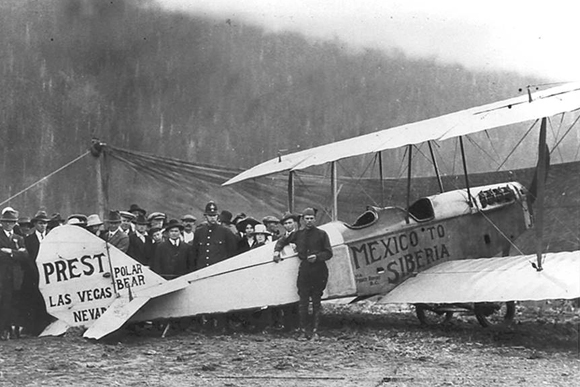
�Ollie� Prest
poses with �Polar
Bear� in front of seine net on Acropolis Hill. September
1921 |
The first aircraft to fly in
Prince Rupert arrived in September 1921, on a railroad
flatcar. �Ollie� Prest was attempting to fly from Mexico to
Siberia and had been forced to land near Hazelton. After
making repairs he shipped his JN-4, christened �Polar Bear�,
to the coast, planning to use the docks to take off. He was
convinced to remain and participate in the city�s annual
Exhibition, flying from tennis courts on Acropolis Hill that
were joined by a purpose built bridge. After a few flights,
the aircraft was damaged on landing, repaired and then
nearly destroyed by a storm, ending its introduction of
Prince Rupert�s citizens to the aviation age.
Return to
map |
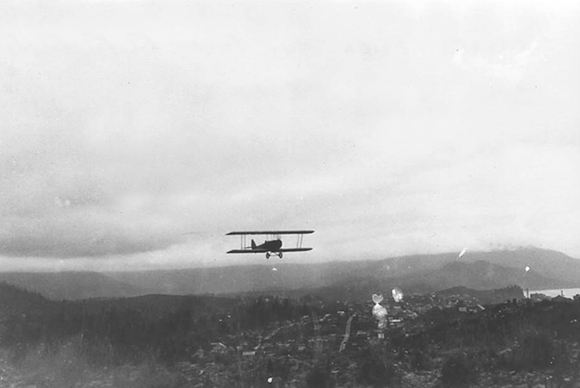
Polar Bear over-flies Prince
Rupert |
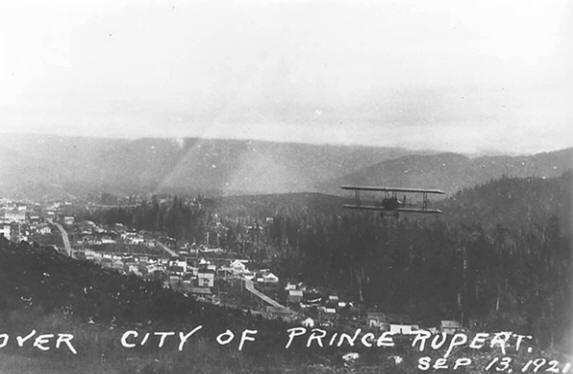
Prest's JN-4 on short final on
Acropolis Hill landing ground. |
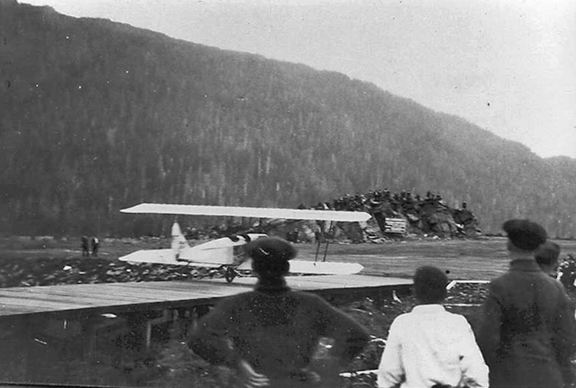
"Polar Bear" on take-off across
bridge joining two tennis courts. |
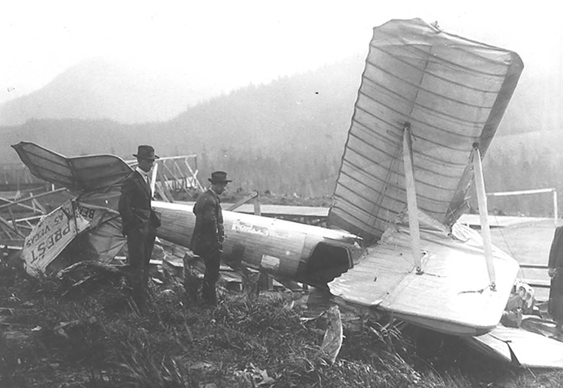
The "Polar Bear" after windstorm
damaged it, September 1921
|
|
The following years saw visits
by a number of float equipped aircraft and flying boats,
most heading along the coast to Alaska. One was the first
aircraft to fly up the coast, a Curtiss MF flying boat
christened �Northbird�, which arrived in July 1922.
|
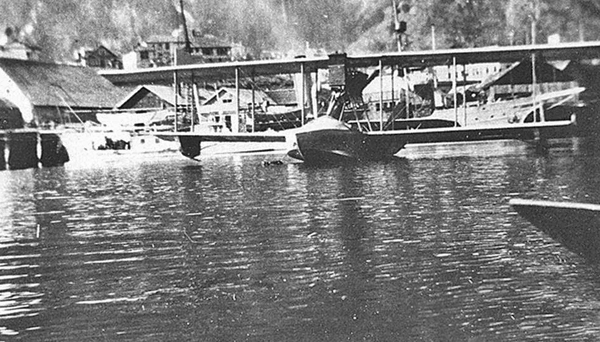
. |
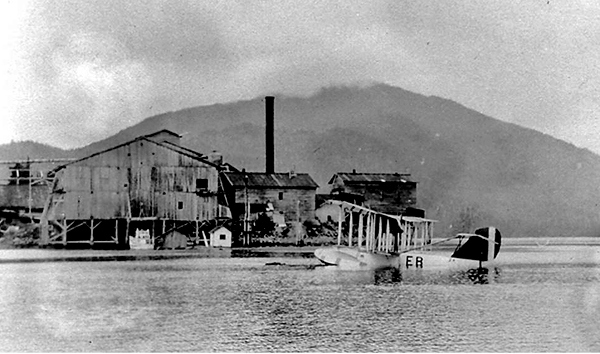
. |
Another Curtiss flying boat, an
HS-2L of the Royal Canadian Air Force, arrived from Jericho
Beach (Vancouver) on July 23, 1923, piloted by
Squadron
Leader Earl Godfrey. The RCAF established a base at Seal
Cove from which it made fisheries patrols until 1937 with
aircraft from #4 (BR) Squadron.
|
|
In 1930 a local pilot,
Desmond
Murphy, incorporated Northern B.C. Airways Ltd. and
purchased a float equipped DH60 Gypsy Moth which he flew
from a barge on the waterfront of the city for the next four
years.
Back to top of
page
Return to
map |
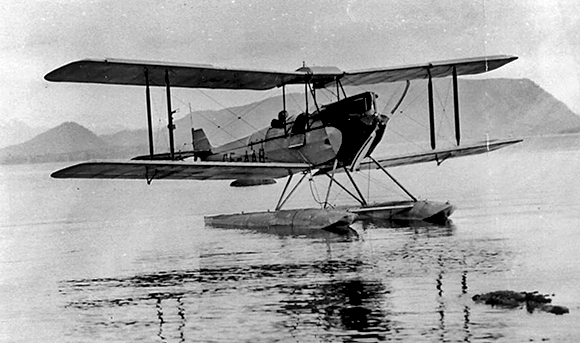
. |
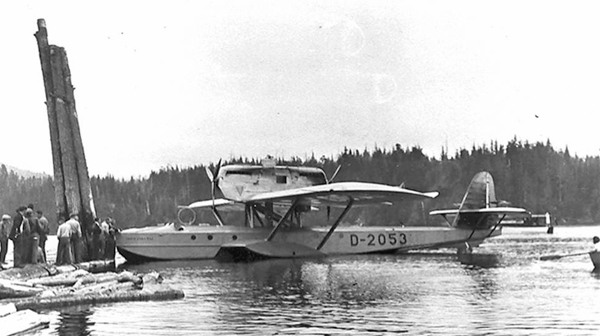
. |
One notable visitor was a
Dornier Wal D-2053 on a round-the-world flight, flown by
Captain Wolfgang Von Gronau. It landed at Prince Rupert on
August 18, 1932 and remained for five days before departing
to Juneau and points west.
|
|
In 1937, in the runup to World
War II, Seal Cove was identified as the preferred location
for a fully equipped RCAF flying boat station. Construction
required substantial blasting and heavy construction work
and was not completed until December 1, 1941.
Back to top of
page
Return to
map |
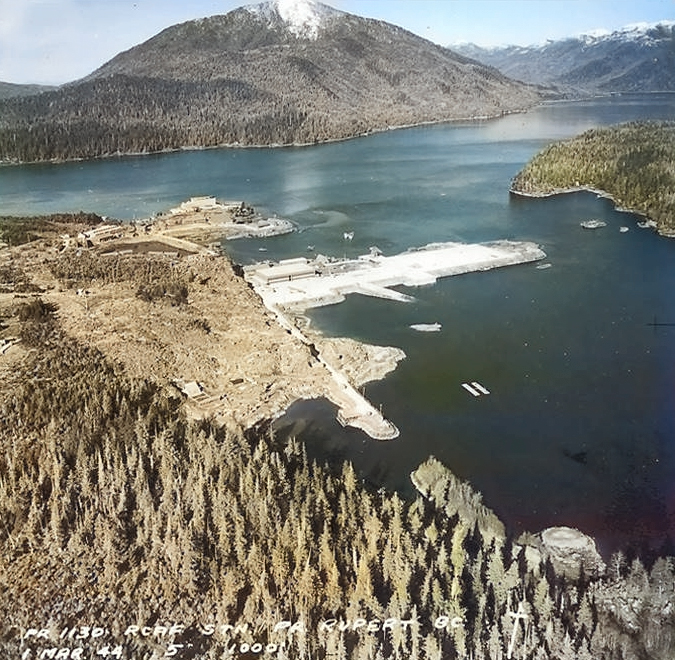
. |
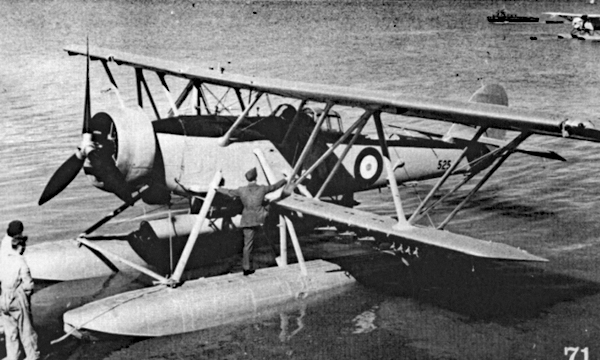 |
No. 7 Bomber Reconnaissance (BR)
Squadron was stationed at Seal Cove effective December 8.
Three days later, their Blackburn Shark aircraft began to
arrive to begin patrols over the Pacific the following
week. The Shark was a challenging aircraft to fly, and over
the next two years, the Squadron experienced several
accidents. In April 1943, the Squadron was equipped with
larger Canso flying boats, allowing for longer patrol and
convoy escort assignments.
|
RCAF Station Prince Rupert
reverted to administrative from operational status in
the spring of 1944 and was turned over to the City of
Prince Rupert in 1945. Within a year Queen Charlotte
Airlines began a weekly scheduled flight using RCAF
surplus Stranraer aircraft. Sadly, one of these
aircraft, CF-BYL, crashed during a nighttime medical
evacuation flight on August 31, 1946 with the loss of
all crew and the child who was the subject of the rescue
attempt.
|
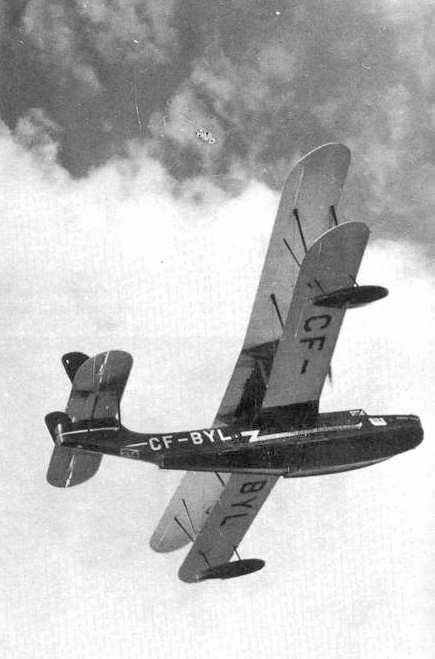
. |
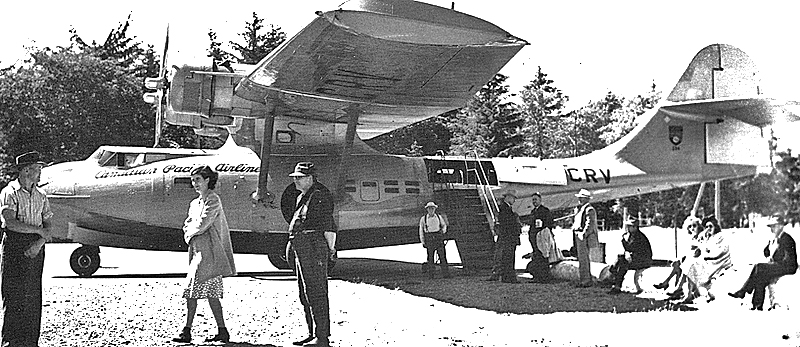
. |
At the beginning of 1947
Canadian Pacific Airlines began regular flights using
ex-military Canso aircraft, also working out of Seal Cove.
But there was increasing demand for a land based airstrip
and after lengthy consideration, Digby Island was chosen as
the best location.
|
To stabilize the
base for the airport 10-12 feet of muskeg had to be
removed and approximately 700 cubic meters of rock
fill had to be barged to Digby Island before a
runway could be constructed. From 1957 to 1959 a
6000� runway, dock and access road were completed.
Navigational aids, water supply, sewage, power from
the mainland and meteorological services were added
in 1960 and 1961. In 1961 an airport license was
issued in Transport Canada�s name for day operation
only and Canadian Pacific began scheduled service.
In 1962 the air terminal building, instrument
landing system and staff dwellings were completed
and in 1971 the maintenance complex and firehall was
built. The only terrestrial access to the island is
by a twenty minute ferry ride from the city
itself, the price of which is included in the cost
of air tickets.
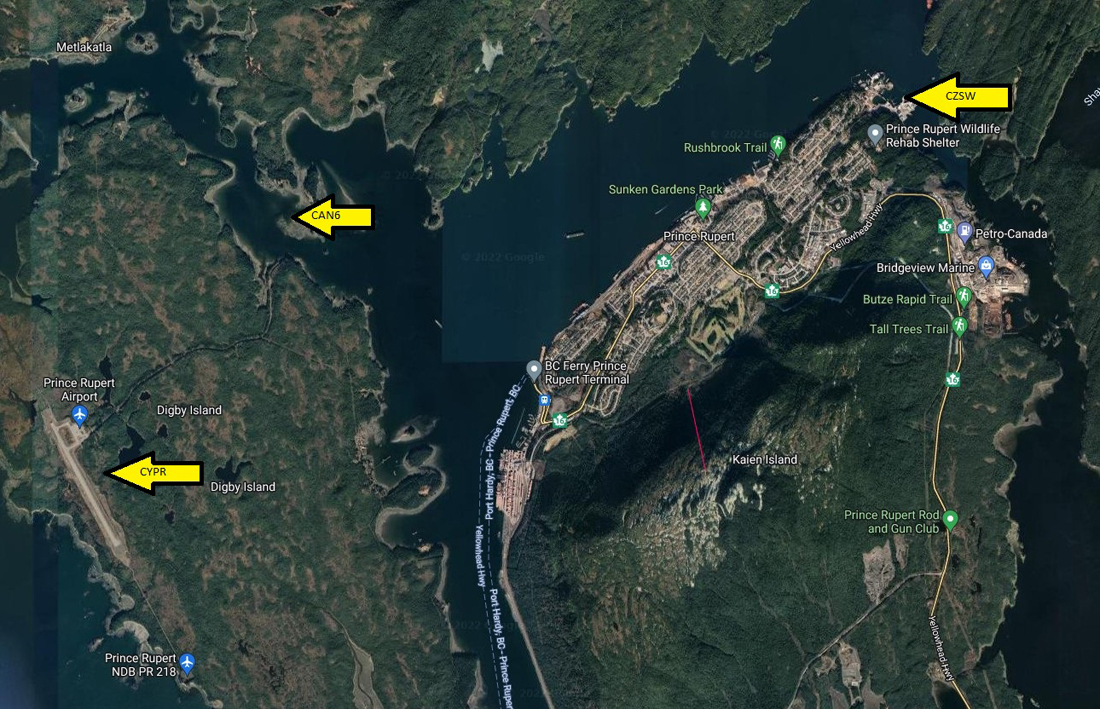
In April 1997 the
Prince Rupert Airport was transferred from
Transport Canada to the city owned Prince Rupert
Airport Authority. As of December 2022, Air
Canada provides scheduled service to the
community.
Prince Rupert also
hosts two licenced water airdromes: Prince
Rupert/Seal Cove (CZSW) and Prince Rupert Digby
Island (CAN6).
Back to top of
page
Return to
map |
Note: Photos
courtesy Chris Weicht except for final aerial view courtesy
Google Maps
 �
British Columbia Aviation Museum Updated:
2023-01-16 �
British Columbia Aviation Museum Updated:
2023-01-16
|